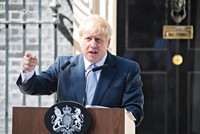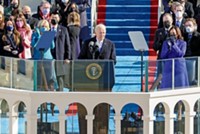Advertisement
Grab your lab coat. Let's get started
Welcome!
Welcome!
Create an account below to get 6 C&EN articles per month, receive newsletters and more - all free.
It seems this is your first time logging in online. Please enter the following information to continue.
As an ACS member you automatically get access to this site. All we need is few more details to create your reading experience.
Not you? Sign in with a different account.
Not you? Sign in with a different account.
ERROR 1
ERROR 1
ERROR 2
ERROR 2
ERROR 2
ERROR 2
ERROR 2
Password and Confirm password must match.
If you have an ACS member number, please enter it here so we can link this account to your membership. (optional)
ERROR 2
ACS values your privacy. By submitting your information, you are gaining access to C&EN and subscribing to our weekly newsletter. We use the information you provide to make your reading experience better, and we will never sell your data to third party members.
Comment
Editorial: What a new president could mean for Brazilian science
by Bibiana Campos Seijo
November 13, 2022
| A version of this story appeared in
Volume 100, Issue 40
At the end of October, Brazil held presidential elections. Left-leaning Luiz Inácio da Silva—better known as Lula—won with around 51% of the vote, unseating right-wing incumbent Jair Bolsonaro. Lula previously served two terms as president from 2003 to 2010. He rose to victory despite his reputation suffering significantly after a 19-month stint in prison for corruption. The charges were ultimately dismissed in 2021.
What does this mean for science in Brazil? Lula is the only candidate who mentioned science during his campaign. During his acceptance speech, Lula confirmed that he is committed to putting the environment back at the top of the agenda and also vowed to combat the deforestation of the Amazon—the world’s largest tropical rain forest and home to a diversity of species not duplicated anywhere else on Earth. And he has a good track record. During his earlier presidencies, Lula took steps to protect the Amazon and was a proponent of sustainable development. He opposed clearing land for grazing cattle or growing crops such as soy—two of the main drivers of deforestation in the region.
The measures his government put in place had a significant, measurable impact on the health of the Amazon forest.
Deforestation decreased during Lula’s administrations. Tasso Azevedo, a former chief of the Brazilian Forest Service, analyzed data collected by Brazil’s National Institute for Space Research using its annual deforestation monitoring system. His analysis revealed that the rate of deforestation declined by 43.7% during Lula’s first term (2003–06) and by 52.3% in his second (2007–10).
In contrast, other Brazilian presidents since Lula have not been so kind to the Amazon forest, with Bolsonaro faring the worst. Deforestation rates continued to fall in Dilma Rousseff’s term (2011–15) but by just 11%. The tide turned under Michel Temer (2016–18), and deforestation rose by 21%. The deforestation rate hit a 15-year high during Bolsonaro’s presidency, increasing 72%.
Early in his term, Bolsonaro committed to opening up the Amazon to new economic ventures. He was true to his word: in the first 7 months of his presidency, the forest lost over 3,360 km2 of cover. And it went on. By 2021 the situation had deteriorated to the degree that a study in the journal Nature reported that the Amazon forest, long one of the world’s most important carbon sinks, had actually become a source of carbon emissions.
Bolsonaro was not an advocate of science or scientists. In addition to not looking after the environment, he slashed the budgets of multiple agencies (including the Brazilian environmental agency) and reduced core science funding in the country by two-thirds. Unsurprisingly, scientists have welcomed the news of Lula’s victory, and they hope he will reverse the anti-science sentiment that Bolsonaro encouraged and foster a culture that prizes scientific innovation and respect for the environment. It’s a hopeful time for Brazilian science once again.
Views expressed on this page are those of the author and not necessarily those of ACS.




Join the conversation
Contact the reporter
Submit a Letter to the Editor for publication
Engage with us on Twitter